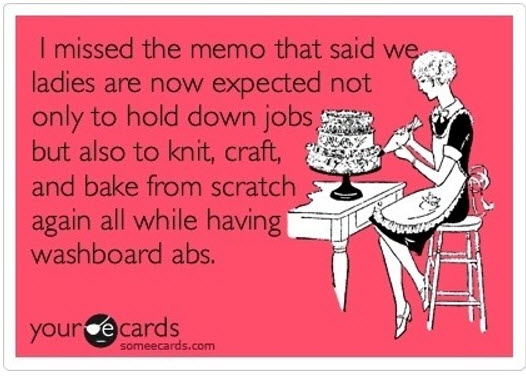PepsiCo CEO Indra Nooyi made headlines recently, saying women still can’t have it all. The question of whether women can achieve success in both their professional and personal lives has been dissected at every angle. Some, like Facebook COO Sheryl Sandberg, say that women absolutely can have it all, if they simply lean in to opportunities provided at the workplace. Others, like Nooyi, say that women still cannot have it all despite strides made by the feminist movement because we simply cannot be great mothers, CEOs or Partners, and dutiful spouses all at the same time.
Those of us who don’t make proclamations that the media zealously reports seem to be left to choose which of those two views is correct. Is it that women simply need to be afforded the same opportunities as men and then need to learn to grasp them just as aggressively? Or is it that regardless of the opportunities available, women must inherently make sacrifices that make it impossible to achieve success in all aspects?
It’s a false choice, based on an assumption that there is a uniform idea of “having at all” and based on an acceptance that certain roles within the home belong exclusively to women. Within the debate is an “ideal” that goes unquestioned: (1) that all women want to reach the c-suite or other top positions in corporate America, while simultaneously attending every school play, keeping up with regular gym sessions, and cooking delicious meals for their families every night; and (2) that these last goals in particular can and should belong to women.

First, as Barnard College President Debora Spar says, feminism liberated us and brought us unimaginable opportunities. But though it
“was meant to remove a fixed set of expectations; instead, we now interpret it as a route to personal perfection. Because we can do anything, we feel as if we have to do everything.” Women who have little ambition to become a CEO or may not naturally fit the role of the “always there” mom, feel the pressure to do both. According to Nooyi, she had to choose- work or family- constantly, day in and day out. She’s not sure her children would say she’s a good mom because she missed too many coffees with mommy for board meetings. But perhaps she’s judging herself with too narrow a set of criteria. Many moms have never been able to attend coffees with mommy because they are cleaning houses, working on factory lines, watching other women’s children, teaching, nursing or holding a host of other positions that were necessary to their families. Ms. Nooyi’s ideal of the successful corporate woman with the flexibility of being the “always there mommy” ignores reality. There are a multitude of career paths and parenting styles that fit each woman differently, depending on her circumstances and ambitions. And that’s ok. As President Spar says, the mistake we’re making is to encourage all women to conform to one model of “perfect,” when we should be encouraging each woman to live her life in a way that’s right for her.
Second, limiting the conversation to just women ignores many of the underlying issues and fails to reconstruct a picture of work-life balance that applies equally to all, regardless of gender. As former Princeton University Professor and Director of Policy Planning at the U.S. State Department Anne-Marie Slaughter explains, the main problem is that we are not talking about men or same-sex couples. Sure, feminism helped society recognize breadwinning was something both men and women can do, but it hasn’t yet democratized caregiving. Those duties and opportunities are still coded as the woman’s realm.
One way to shatter these rigid roles may be found by looking at same-sex couples, where both spouses take on breadwinning and caregiving roles. Another way might be found in increasing the prevalence of flexible work and leave schedules that allow both men and women time to take better care of the family while also attending to their responsibilities on the job. On this latter point, however, studies still show that women take on significantly more work in the home than men so it is important that both men and women – both fathers and mothers – utilize this new approach both at work and at home.
If we look at questions of work and family more clearly, we can see that this isn’t a woman’s problem, and we can also see that there are lots of different ways one can “have it all.” Part of the problem, then, is the debate (whether or not women can have it all) itself. We’re asking the wrong questions and accepting the wrong assumptions. Women need to feel free to define what “all” looks like based upon their own individual goals. And all of us, men and women, need to spend time figuring out how we are going to share the joys, duties, opportunities and sacrifices inherent in familial life equitably.
Yesterday, MangoDB CEO Max Scherison stepped down in order to spend time with his family, noting, “Matt Lauer asked Mary Barra, the CEO of GM, whether she could balance the demands of being a mom and being a CEO. The Atlantic asked similar questions of PepsiCo’s female CEO Indra Nooyi. As a male CEO, I have been asked what kind of car I drive and what type of music I like, but never how I balance the demands of being both a dad and a CEO.” When we fail to ask these questions and instead adopt the tired framing of “whether women can have it all,” we’re setting young women up to fail. Whatever careers or families they might build, they’ll always be measuring them against an unbalanced and arbitrary “all.”








